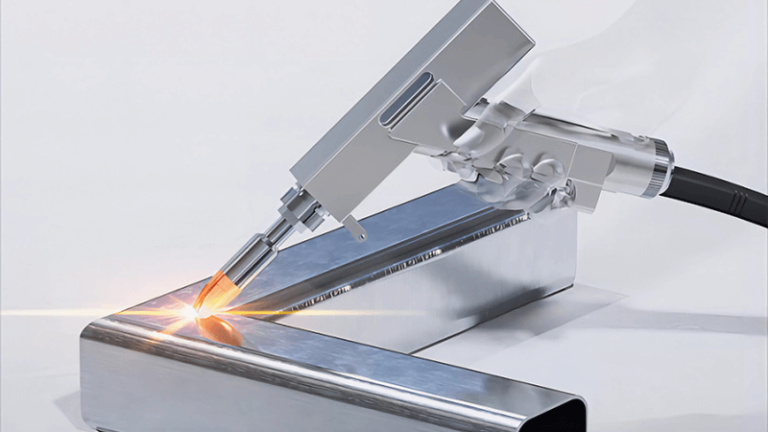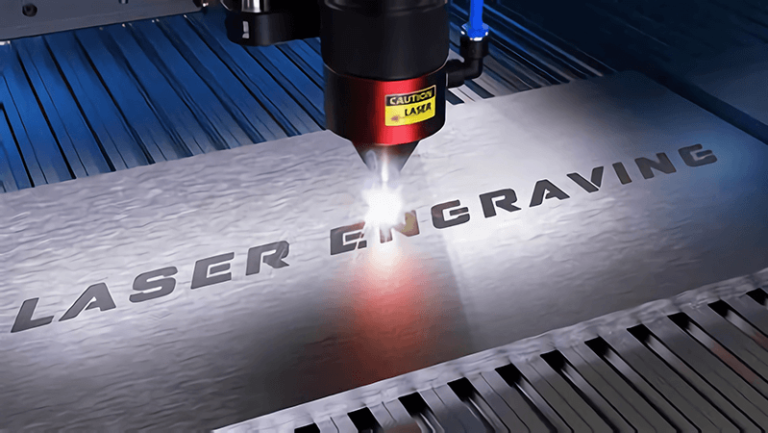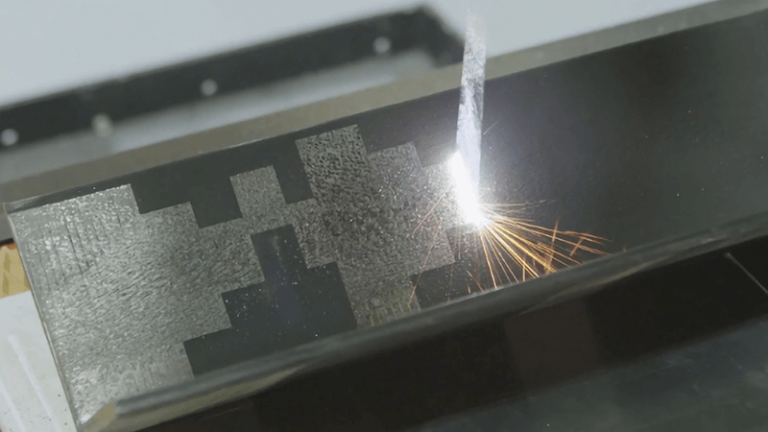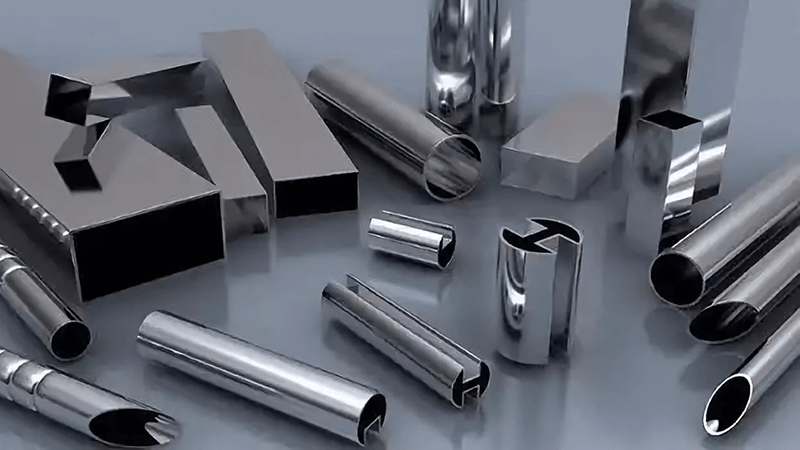
As an engineer at Kirin Laser, I’ve had the privilege of working closely with the latest fiber optic laser cutting technologies. And let me tell you—this technology is not just a fad; it’s revolutionizing industries across the globe. However, there’s still some uncertainty about where these lasers can be applied effectively. Many people are aware of their high precision but unsure of the scope of their capabilities. If you're curious about how fiber optic laser cutting machines can boost your production efficiency and versatility, you're in the right place!
Fiber optic laser cutting machines have revolutionized manufacturing processes across multiple industries by providing high precision, speed, and versatility. Their applications range from automotive and aerospace to medical devices and renewable energy production, making them critical tools in modern industrial practices. As technology advances, the role of fiber laser cutting is expected to expand further, enhancing productivity and innovation across sectors.
In this blog, we’ll explore the top applications of fiber optic laser cutting machines in various industries. I’ll explain why they’re so effective, share insights from real-world applications, and sprinkle in a few “wow” facts along the way. By the end of this post, you’ll see why fiber optic lasers are the future of industrial cutting.
Precision Cutting in Automotive Manufacturing
The automotive industry demands precision, efficiency, and the ability to work with a wide range of materials. Fiber optic laser cutting machines fit this bill perfectly. Whether it's cutting steel, aluminum, or other metals, these machines can make ultra-precise cuts with minimal heat distortion. Unlike traditional cutting methods, fiber lasers offer a cleaner edge, reducing the need for further post-processing.
One standout feature of fiber optic lasers is their ability to maintain high-quality cuts even at high speeds. This is essential when working on car parts like chassis components, body panels, and exhaust systems. Moreover, fiber lasers are highly adaptable. They can easily switch between cutting different materials, making them a versatile tool for the automotive supply chain.
In modern manufacturing, laser cutting technology has become an essential process in many industries, especially in the automotive sector, where precision and efficiency are crucial. Below is a detailed introduction to two advanced laser cutting technologies, focusing on their cutting accuracy and efficiency.
Fiber optic laser cutting machines can handle a wide variety of metal and composite materials.True
The article mentions that fiber laser cutting machines can cut materials such as steel, aluminum, titanium alloys, composites like fiberglass, carbon fiber, aramid, and more.
Fiber laser cutting machines offer higher efficiency compared to traditional CNC machining methods.True
The article states that their efficiency is more than three times higher than traditional CNC machining methods.
Cutting Precision
- Six-Axis Robot 3D Fiber Laser Cutting Machine: For example, the FANUC-M20iB model has a trajectory precision of ±0.15mm and a repeat positioning accuracy of ±0.03mm. It can achieve high-precision cutting, meeting the automotive industry's requirements for the accuracy of chassis parts, body panels, and other components.
- High-Precision Fiber Laser Cutting Machine: It uses a linear motor gantry dual-drive structure with a maximum acceleration of up to 1.5g. The professional laser cutting system can handle flat sheet metal and fully automatic feeding of coil-to-piece cutting. It includes features like graphic nesting and sharp angle smoothing to ensure cutting precision.
Cutting Efficiency
- Power and Speed: Fiber lasers used for 3D cutting usually have power options like 2000W, 3000W, 4000W, and 1000W. You can choose different power lasers based on the thickness of the metal sheets to improve cutting efficiency. For example, a six-axis robot 3D fiber laser cutting machine with 6000W or more uses an output control box and 3-level or 5-level perforation, with a maximum cutting thickness of up to 15mm. Its efficiency is more than three times higher than traditional CNC machining methods.
- Bevel Cutting: The sonic fiber laser cutting machine can quickly cut and bevel various metal materials such as carbon steel, stainless steel, and aluminum alloy. The imported CNC system can cut different types of bevels like K-type, Y-type, X-type, V-type, and U-type, improving cutting efficiency and variety.
Material Handling Capability
- Various Metal Materials: Fiber laser cutting machines can cut many metal materials, including steel, aluminum, titanium alloy, galvanized sheets, aluminized zinc sheets, brass, and copper. They can also quickly cut different pipes like carbon steel pipes, aluminum alloy pipes, stainless steel pipes, and titanium pipes, meeting the material needs of different parts in automobile manufacturing.
- Composite Materials: Some fiber laser cutting machines can also cut composite materials like fiberglass, carbon fiber, aramid, and Kevlar, as well as composite non-metal materials like automotive plastic molds and interior/exterior parts. This shows their strong ability to handle different materials.

Degree of Thermal Deformation
Fiber laser cutting machines have strong focusing ability. They can concentrate a large amount of energy on a very small focal point to achieve fast cutting, with a very small heat-affected zone. For example, when cutting aluminum alloy, the heat-affected zone is about 0.1 - 0.2mm wide. Traditional cutting methods have a larger heat-affected zone, which reduces the impact of thermal deformation on the precision of automotive parts.
Sheet Metal Processing
In the world of sheet metal processing, fiber optic laser cutting machines are invaluable. Sheet metal is used in everything from aerospace components to kitchen appliances, and the demand for precision cuts is high. Fiber lasers excel in cutting through thin to medium thicknesses of sheet metal with incredible accuracy.
The advantages of using fiber optic lasers in sheet metal processing include their speed and ability to cut intricate shapes. Traditional methods like plasma or mechanical cutting can’t match the detail that fiber optic lasers provide. Plus, the laser beam’s narrow width means minimal material wastage, making it a more cost-effective choice for businesses.
Some detailed aspects with data
-
Cutting Precision
Fiber laser cutting machines can achieve extremely high cutting precision. The positioning accuracy can reach 0.05mm, and the repeat positioning accuracy can be as precise as 0.03mm. They can form tiny laser spots and realize micron-level cutting precision, easily handling various complex shape processing requirements, like tiny curves, holes or intricate patterns, ensuring the dimensional accuracy and shape consistency of products. -
Cutting Speed
Their cutting speed is much faster than traditional processing methods. For example, a 2000-watt fiber laser machine can achieve a cutting speed equivalent to that of a 3000-watt carbon dioxide laser device, and in some cases, it can even be more than twice as fast. Generally speaking, the cutting speed can reach up to 10 meters per minute, and the maximum positioning speed can be 30 meters per minute, which is much faster than wire cutting. -
Cutting Thickness
With the development of technology, the emergence of 10,000-watt fiber laser cutting machines has continuously broken through the maximum thickness of processable metal sheets. Currently, 10,000-watt laser cutting machines can cut stainless steel sheets with a thickness of up to 120mm.

-
Material Adaptability
They are suitable for a variety of metal materials, including stainless steel, carbon steel, aluminum alloy, titanium alloy, galvanized sheets, aluminum-zinc coated sheets, brass, and copper. They can also cut various tubes such as carbon steel tubes and aluminum alloy tubes, meeting the material requirements of different sheet metal processing tasks. -
Cost-effectiveness
On one hand, due to the narrow width of the laser beam, the width of the cutting seam is generally between 0.10mm and 0.20mm, resulting in minimal material waste and maximizing the utilization rate of materials. On the other hand, the photoelectric conversion efficiency is about 30%. The power consumption of the whole machine is only 20% - 30% of that of similar carbon dioxide laser cutting machines. Moreover, there is no need for working gas for the laser, and there are no consumables like reflective mirrors, which can save a lot of operation and maintenance costs. -
Processing Quality
The cutting surface is smooth without burrs. The surface roughness of the cut edge is generally controlled within Ra6.5. The heat-affected zone of the cut edge is very small, and there is basically no thermal deformation of the workpiece, eliminating the need for subsequent grinding treatment and effectively reducing subsequent processing procedures and production costs.
Aerospace Applications
Aerospace manufacturing requires the highest precision in every aspect, and fiber optic laser cutting machines are a perfect fit. From cutting titanium alloys for aircraft structures to intricate components for satellite parts, fiber lasers offer the exact precision needed in this high-stakes industry.
What sets fiber optic lasers apart in aerospace applications is their ability to maintain a clean edge with minimal thermal impact on materials. This ensures that components retain their integrity and performance under extreme conditions. With the ability to handle a wide range of metals, including composites, fiber lasers make it easier to produce high-performance aerospace parts without compromising on quality.
In the medical device industry, fiber laser cutting machines provide micron-level precision and smooth, burr-free edges.True
The article describes that fiber laser machines achieve micron-level precision and produce smooth, burr-free cuts, which are essential for medical devices.
Fiber optic laser cutting machines are incapable of cutting through thick metal sheets beyond 10mm.False
The article mentions that 10,000-watt fiber laser cutting machines can cut stainless steel sheets up to 120mm thick.
Medical Device Manufacturing
If you think fiber optic laser cutting machines are only for heavy-duty applications, think again. In the medical field, they are used to manufacture highly precise components such as surgical instruments, implants, and medical tubing. Laser cutting offers unmatched precision, which is crucial when working with the fine tolerances required for medical devices.
The clean cuts produced by fiber lasers also minimize the risk of introducing contaminants during the production process. For medical devices, where hygiene and precision are critical, fiber optic lasers provide a cleaner, safer option compared to traditional cutting methods.
In the field of medical device manufacturing, fiber laser cutting machines have many important applications and advantages:
High Precision Cutting
- Micron-Level Precision: Fiber laser cutting machines can achieve micron-level cutting precision. For example, the LC119 laser cutting head can have a cutting gap precision of up to 2μm. When processing the inner diameter of medical catheters, the precision can be controlled within ±2μm. This meets the strict precision requirements for implants like staplers, heart pacemakers, artificial joints, and surgical instruments.
- Ultra-High Tolerance Precision: The machining tolerance can reach 0.003-0.006mm or even higher. This is much better than plasma cutting, which has a tolerance of 0.02mm, and other cutting tools that have tolerances between 1-3mm. This ensures the high-quality production of medical devices.
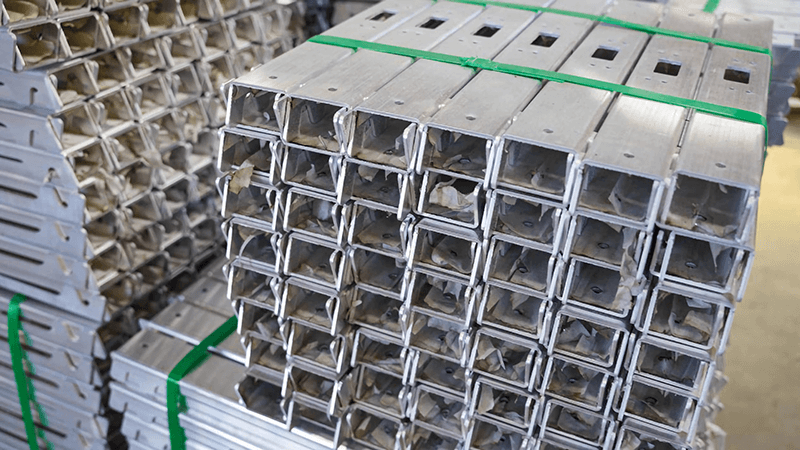
High-Quality Cutting
- Narrow Cuts and Less Waste: Fiber laser cutting produces very narrow cuts, usually between 0.1-0.2mm. This minimizes material waste, increases material usage, and reduces production costs.
- Smooth, Burr-Free Edges: The cutting edges are smooth, without burrs or deformation. For example, after laser cutting, the edges of Haibo tubes are high quality. This helps them perform well in minimally invasive surgical instruments, providing good flexibility, torque, and compression. It also reduces the need for further processing.
Wide Range of Materials
Fiber laser cutting machines can cut many common materials used in medical devices, including stainless steel, titanium alloys, nickel-titanium alloys, cobalt-chromium alloys, magnesium alloys, polylactic acid, and biocompatible plastics. This meets the manufacturing needs of different medical devices.
High Efficiency
- Fast Cutting: Compared to traditional cutting methods, fiber laser cutting machines are faster. For example, the high-energy laser GN-NCF series large-format laser cutting machine can perform intelligent layout cutting with one click. When paired with a bevel cutting system, it better meets the cutting needs of high-end medical devices and effectively improves production efficiency.
- Processing Complex Shapes: By programming, complex geometric shapes can be quickly created without frequent tool changes. This adapts to the changing design needs of medical devices. For example, various shapes of medical brackets can be processed, providing greater design freedom for medical device manufacturing.
Highly Automated and Safe
- Automated Production: Controlled by computer programs, fiber laser cutting machines can achieve automated production. When combined with automatic feeding devices, they reduce labor intensity, increase production efficiency and product quality, and are suitable for small-batch production. This lowers the overall cost. For example, specialized pipe cutting machines can be equipped with automatic feeding devices to achieve intelligent cutting.
- Non-Contact Cutting: Fiber laser cutting is a non-contact method, avoiding the heat and mechanical damage that can occur with traditional cutting methods. It reduces the risk of material contamination, ensuring the safety and hygiene of medical devices. It also lowers maintenance costs, such as tool wear.

Electronics Industry
In electronics, the demand for smaller, more complex components is ever-growing. Fiber optic laser cutting is indispensable in the production of circuit boards, connectors, and small parts for consumer electronics like smartphones and laptops. These lasers can cut through a range of materials, including thin metal and plastics, with extreme precision.
Not only do fiber lasers deliver high-quality cuts, but they also allow for minimal heat distortion, which is vital when cutting sensitive electronic components. The result? Faster production times, lower costs, and fewer defects in the final products.
Art and Jewelry Design
It’s not all about industrial-scale operations. Fiber optic lasers are also making waves in the art and jewelry industries. For artists, jewelers, and designers, precision is key when creating intricate patterns and details. Fiber optic lasers enable the creation of beautifully detailed cuts in metals, plastics, and even wood. The laser’s precision allows for the creation of unique, custom designs with high repeatability.
This is why fiber optic laser cutting machines have become popular in boutique jewelry design shops and high-end art studios. The versatility of these lasers ensures that artists can bring their most creative ideas to life with flawless detail.
High Precision Cutting and Engraving
- Micron-Level Precision: The fiber laser cutter can achieve cutting precision at the micron level. For example, when making small decorative parts for high-end watch dials, the error can be kept within 0.03-0.05 millimeters. This allows for precise cutting of fine patterns and accurate holes that meet the design requirements.
- Delicate Engraving: Its engraving precision can reach 0.01 millimeters. It can engrave very detailed textures and patterns on the surface of jewelry, such as engraving patterns on diamonds, which increases the artistic value of the jewelry.
Personalized Customization
- Meeting Unique Needs: By using computer programming, it can engrave words, patterns, or photos specified by customers on jewelry. For example, it can engrave special love promises or anniversaries on the inside of wedding rings. The smallest font size can be as small as 0.5 millimeters.
- Achieving Innovative Designs: Fournier Jewelry uses the WELASE30W fiber laser machine to create customized emotional jewelry for customers, such as coin-shaped tags. These can be personalized with patterns chosen by the customer, including elements like family or children.
Fiber laser cutting technology requires frequent maintenance due to high consumption of consumables.False
The article states that fiber lasers do not require consumables like reflective mirrors and have lower maintenance costs.
Fiber laser cutting machines are not suitable for producing intricate designs in the jewelry industry.False
The article explains that fiber lasers are popular in the jewelry industry due to their ability to create intricate, detailed cuts with high precision.
Architectural Models and Prototypes
Whether it’s creating miniature architectural models for real estate projects or prototypes for product design, fiber optic laser cutting machines offer the precision and versatility needed to work with a variety of materials. In these applications, the ability to produce fine details and complex shapes is paramount.
From cutting acrylic for display models to engraving wood for prototypes, these machines ensure that the final product meets the high standards of architects and designers. Fiber lasers can also cut multiple materials in one go, which reduces the time spent switching tools in between jobs. This ability saves time and costs while improving overall productivity.
Food Packaging and Processing
Did you know that fiber optic lasers are even used in food packaging? It might sound surprising, but the precision and speed of these lasers are perfect for cutting packaging materials like cardboard, plastic, and film used in food products. The laser ensures clean cuts and sealed edges, which is essential for maintaining hygiene standards in the food industry.
Moreover, these lasers are used for engraving barcodes, logos, and expiration dates on food packaging, making them an ideal solution for businesses looking to automate and streamline their production lines. The flexibility and speed of fiber optic lasers help meet the high demands of the food processing industry.
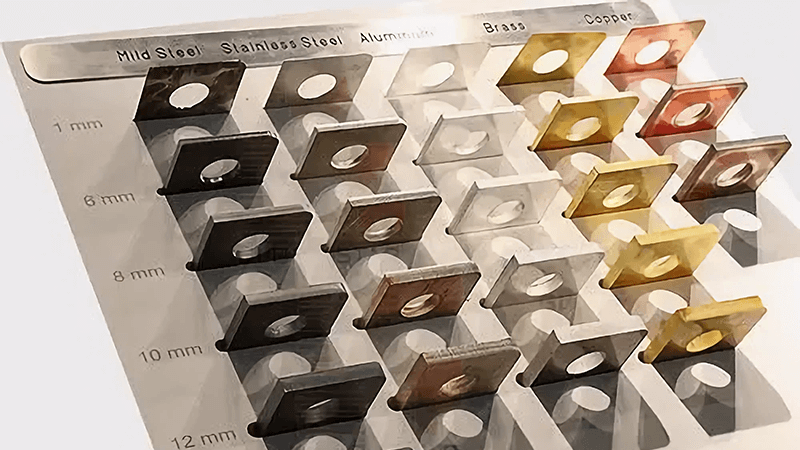
Summary: Why Fiber Optic Lasers Are Essential for Modern Industry
From the automotive sector to aerospace and even the arts, fiber optic laser cutting machines are playing a crucial role in modern manufacturing. They’re fast, precise, and adaptable, making them an essential tool for businesses that require high-quality cuts in a wide range of materials. Whether you’re cutting sheet metal, designing intricate jewelry, or manufacturing medical devices, fiber lasers offer unparalleled benefits.
By integrating fiber optic laser cutting technology into your operations, you can achieve faster production times, reduce waste, and increase your overall output quality. And the best part? These lasers are highly adaptable, meaning they can grow with your business as your needs evolve.
As a Sales Engineer at Kirin Laser, I’ve seen firsthand how fiber optic laser cutting technology can transform businesses. Whether you’re looking to upgrade your current equipment or start fresh with fiber laser cutting machines, the investment will certainly pay off in terms of productivity, precision, and profitability.
References:
- "How to Maximize Efficiency with Fiber Laser Cutting?", from Kirin Laser.
- "Daily Maintenance and Use Issues: How to Keep Your Fiber Laser Cutting Machine Running Smoothly?", from Kirin Laser.
- "Top 5 Features to Look for When Buying a Metal Cutting Laser for Your Business", from Kirin Laser.
- "Why are Metal Cutting Lasers Essential for Modern Fabrication?", from Kirin Laser.
- "Exploring the Wide Range of Industrial Applications for Lasers?", from Kirin Laser.
- "How Can You Achieve Optimal Laser Machine Cutting Performance?", from Kirin Laser.
- "Top 8 Industrial Applications Of Fiber Laser Cutting Explained", from Laser Technologies.
- "The Ultimate Guide to Fiber Laser Cutting Machine", from BPI.


